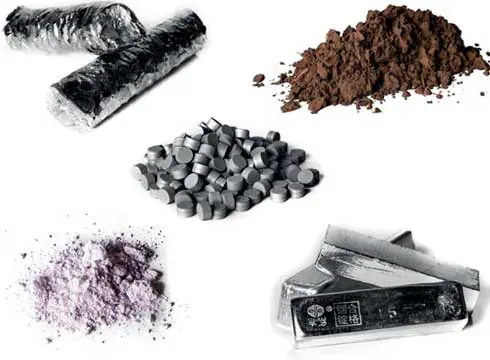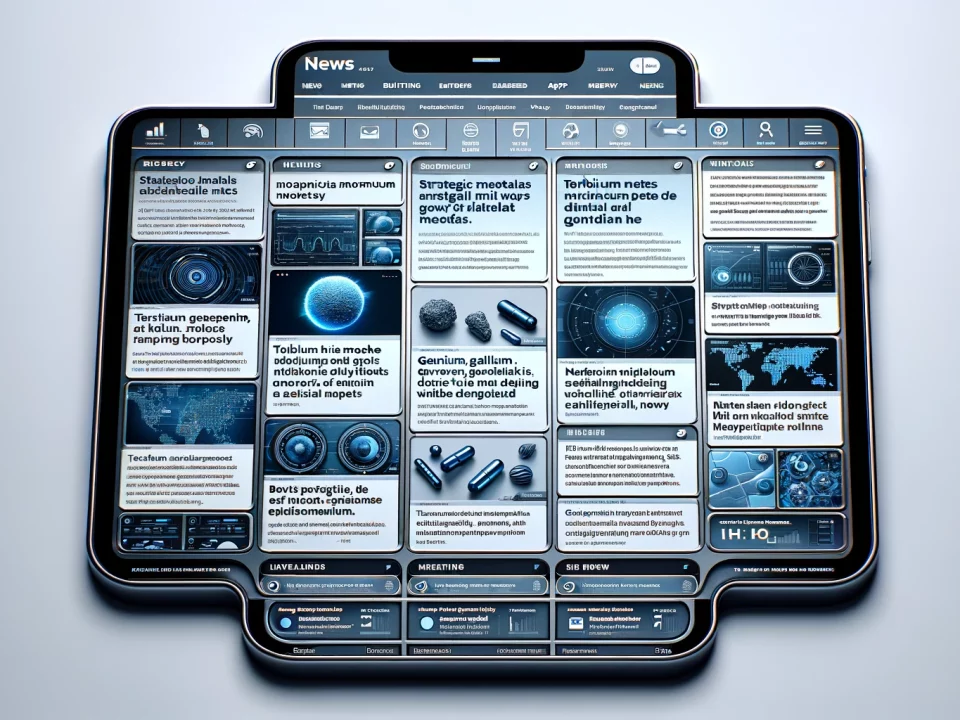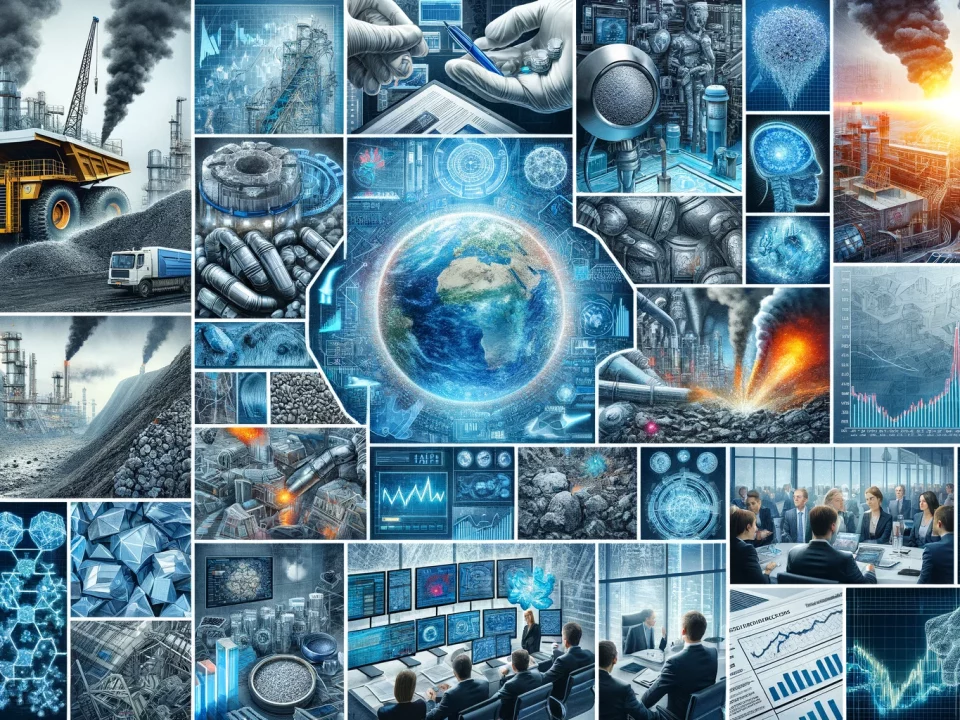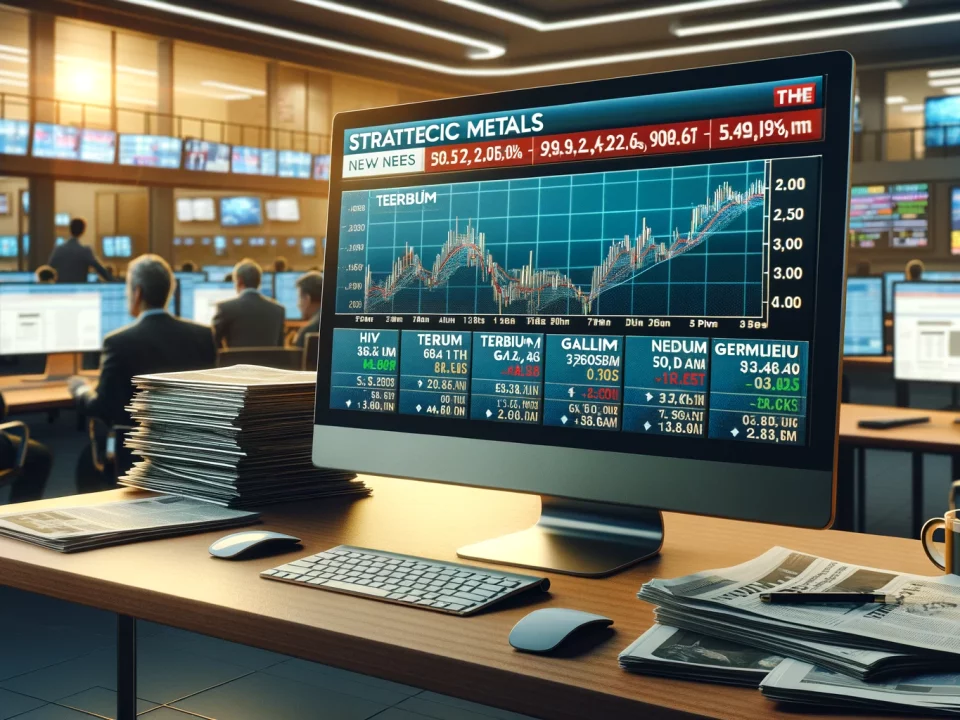
7 Things You Should Know Before Purchasing Strategic Metals
March 1, 2023
Strategic Metals – Quarterly Performance Report
April 27, 2023Today we would like to introduce you to spice metals. The term “spice metals” is a term coined by metallurgists, geologists and scientists within the industry for a certain few technology metals, rare earth oxides and precious metals.
Before we do that though let’s give you a brief introduction to the various terms and names for the metals we offer as physical assets. It can be confusing as different industries have different names for the exact same metals so let’s keep it simple.
The name of our company is Strategic Metals Invest. Let’s begin with Strategic Metals which is an umbrella term for the metals that are critical to all nations’ economic prosperity and increased security capabilities. Our modern society could not function without Strategic Metals.
The Strategic Metals we offer include traditional metals in the form of bars (ingots) but also we offer the Rare Earth Elements which are the oxides or powdered form.
There are 17 Rare Earth Elements however not all are rare or relevant as physical assets for different reasons. There are 10 strategic metals that are critical and irreplaceable in all modern technology, electric cars, solar power, wind turbines, the aerospace industry, medical devices, aviation and the list goes on and on.
Nearly every industry has coined its phrase for the metals that are critical to that particular industry so when you hear technology metals, energy transition metals, defense metals, green metals or any other term the important thing to remember is they are all the same group of metals with multiple applications in all of these industries. Many technology metals are also energy transition metals as well as defense metals.
Regardless of the industry name here are the 10 that we offer and that are relevant as physical assets, Gallium, Germanium, Hafnium, Indium, Rhenium, Tellurium, Dysprosium, Praseodymium, Neodymium and Terbium.
The reason they are relevant as physical assets is China has a monopoly in the rare earth industry. Unbelievably, China is responsible for 90% of the world’s processing and refining. This means that we in the west are completely dependent on China for the downstream raw materials that ultimately become trillions of dollars in upstream GDP.
That’s a topic for another newsletter however in a nutshell that’s how and why private investors can profit from owning Rare Earths as physical assets. It is purely supply and demand driven and China has all the supply while there is increasing global demand and increasing applications.
Now let’s introduce you to the spice metals –
In some industries, Rare Earth Elements are applied in very small doses – just like seasoning in the kitchen.
Half a teaspoon of scandium for lighter aircraft components, and a pinch of indium for the displays of flat screens and smartphones. Known in metallurgy as spice metals, certain rare earth oxides and technology metals play a key role in developing state-of-the-art electrical engineering products. Like the spices in the kitchen that give a dish a distinctive flavour or make it easier to digest, metallic refinements provide or improve special material properties. Often, only small quantities in the range of micrograms and grams are used in production. However, despite the low dosage, metals form an essential component in the material mix of high-tech applications. For example, their absence makes main metals such as iron or aluminium in alloys less hard, corrosion-resistant, conductive or magnetic.
The Salt of Modern Industry:
Spice metals are commonly understood as selected technology metals, rare earths and precious metals. They are found in the formulas of many key technologies of modern life: in the production of permanent magnets for e-mobility and wind turbines (neodymium and praseodymium), lasers (erbium, gallium), automotive catalysts (palladium, platinum), photovoltaic elements (indium), computer chips (gallium) and turbine technology (hafnium, rhenium). Like salt in the kitchen, it is impossible to imagine any of these industries without these metals. The development of future technology will also depend decisively on their inclusion. Fuel cells as energy carriers and energy converters for hydrogen depend on adding palladium and terbium.
The Correct Dosage:
Like using ingredients in the kitchen, spice metals are only added to production in small quantities. These examples illustrate how low the dosage can be –
Smartphone: A 111-gram device contains 0.017 grams of gold, 0.002 grams of palladium, and 0.3 grams of rare earth oxides such as neodymium, dysprosium and gadolinium.
In addition, there is indium in equally homoeopathic doses: 0.004 grams in the display and 0.0022 grams in the circuit board.
Exhaust catalysts: With a total weight of about 1 kilogram, each contains up to 7 grams of platinum and palladium and 1-2 grams of rhodium.
F-16 Fighter Jet: The military aircraft, which weighs about 12 tons when empty, contains 420 kilograms of rare earths in the form of cobalt and samarium, among others.
Even if rare metals are not needed in enormous quantities, their absence can interrupt the manufacture of products because of broken supply chains or export stoppages. In such cases, the economic damage is likely to far exceed the material value of the imported metals.
Complex Extraction of Spice Metals:
The supply situation for high-tech spice metals is complex; they usually must travel a long way from the mining area to the processing site. The most important deposits of rare earths are in China, for example, from where they are brought to Europe by ship, as in the spice trade in the past.
In addition, the raw materials are often in short supply and are only extracted as by-products of other metals. The latter makes their extraction very costly, and the quantities extracted cannot be scaled as required. This has an impact on the price.
As a result, recycling the metals from the end products is also becoming more urgent. However, because the quantities of raw materials are very small and the materials are often compounded with other materials, e.g. alloys, profitable recycling models are difficult to implement. Moreover, the recycling economy alone cannot meet the demand, which is increasing with each passing year.
By 2050, for example, the European industry will need between seven and 26 times more rare earth metals than it consumes today. This is the conclusion of a study by the Catholic University of Leuven (Belgium).
Scarce and Expensive Raw Materials:
The metals, whose weight in many everyday products is only a few milligrams, have to be mined by the ton. Take indium, for example, where the production of smartphones by the billions and the further development of photovoltaics have caused annual demand to rise from 50 tons in the 1980s to 1,000 tons today. The global reserves of a maximum of 15,000 tons are distributed from a few countries, such as China, Canada, and Peru, where it is extracted during the mining of zinc ores. This has its price. The price per kilogram of indium has risen by almost 80 per cent in the past five years. For terbium, the increase was over 500 per cent. In the medium term, therefore, there is much to suggest that the prices for these extremely precious spice metals could continue to rise.
If you would like to learn more about Strategic Metals as physical assets please contact us.





